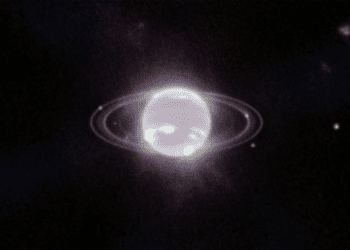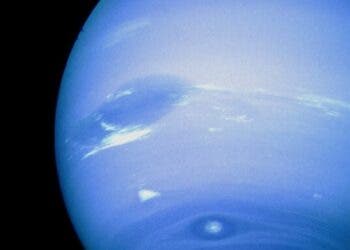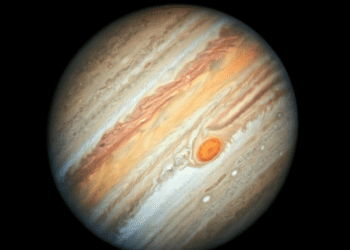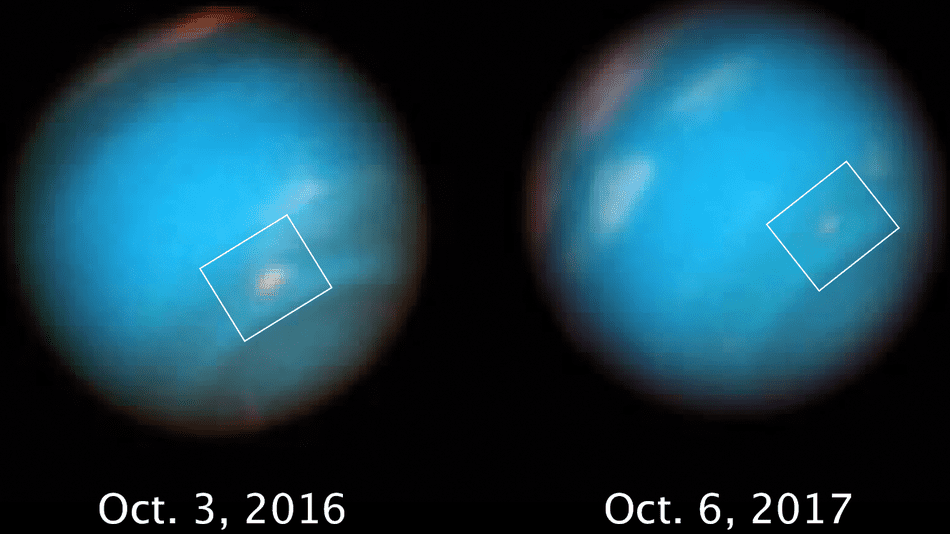
Since 2015, astronomers have been following a dark vortex the size of China swirling over Neptune, the solar system’s outermost planet. The vortex is packed with hydrogen sulfide — aka the chemical that makes farts or rotten eggs smell awful — which it swept from deep within the planet’s atmosphere. Now, researchers say that what may quite possibly be the biggest fart in the solar system is slowly fading away.
Mysterious (and stinky)
Such dark vortices aren’t a novelty. The first features were spotted in the 1980s by NASA’s Voyager 2 spacecraft. Overall, scientists have documented five of the dark streaks over Neptune’s atmosphere. The most recent one was discovered by the Hubble Space Telescope in 2015.
The vortex, dubbed SDS-2015, is normally invisible, being shrouded by Neptune’s cloudy surface. But Hubble can see it thanks to its Wide Field Camera 3 which can probe the hazy atmosphere at blue optical wavelengths.
“We have no evidence of how these vortices are formed or how fast they rotate,” Agustín Sánchez-Lavega from the University of the Basque Country, said in the statement. “It is most likely that they arise from an instability in the sheared eastward and westward winds.”
Scientists have a hunch though that these vortices form when gas and air from the planet’s atmosphere swirl and freeze, turning into a mass than drifts into the upper atmosphere guided by currents. As the storm rages on, it pulls up material from the lower atmosphere, including the stinky hydrogen sulfide — and in copious amounts judging from spectrometry readings.
We still don’t know a lot about these somewhat mysterious features. Many questions still remain pertaining to their origin, drift and oscillation mechanics, and how they eventually dissipate. It is this latter question that a new study attempts to clear up.
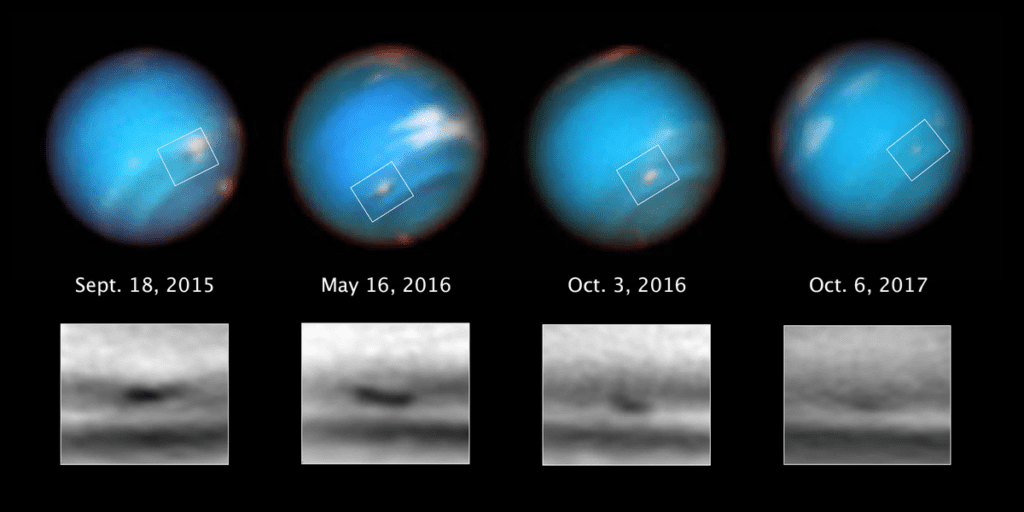
The team of researchers at the University of California Berkeley and the University of Basque Country, Spain, analyzed observations of the dark vortex made between 2015 and 2017. They learned that the contrast to the surrounding area of the dark vortex dropped from 7 percent to 3 percent over this period, as reported in the Astronomical Journal.
This is essentially the first time that scientists have documented a vortex’s decline in action. Previously, models that predicted the movement of SDS-2015 suggested that the dark vortex should drift toward the equator, guided by wind shear. Once it got too close to the equator, the vortex would break up, creating a flashy outburst of cloud activity — or so the prediction went. In reality, the vortex is not breaking up spectacularly. Instead, it’s just fading away steadily and rather uneventfully.
Like Jupiter’s Great Red Spot (GRS), the storm swirls in an anticyclonic direction. But unlike Jupiter‘s GRS, our smelly dark vortex isn’t constrained by as many alternating wind jets (the gas giant’s colorful bands). Neptune only has three broad jets: a westward one at the equator, and eastward ones around the north and south poles. Scientists expect to see the vortex change lanes and cruise anywhere between these three jets before it succumbs.
“No facilities other than Hubble and Voyager have observed these vortices. For now, only Hubble can provide the data we need to understand how common or rare these fascinating neptunian weather systems may be,” said co-author Michael H. Wong of the University of California at Berkeley.
